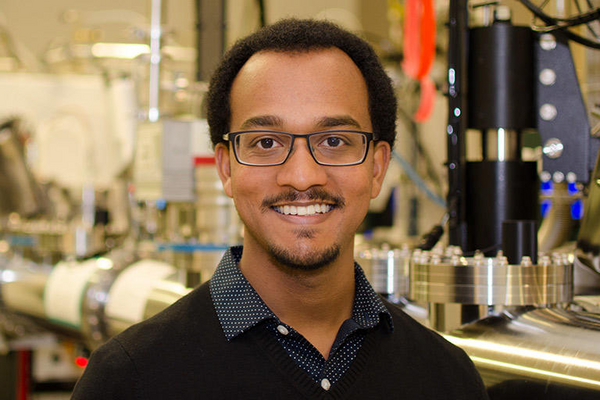
Condensed Matter Seminar - "Strain and Gain: Moiré lattice relaxation and intercalation of 2D atomic layers"
- Event Type
- Seminar/Symposium
- Sponsor
- Physics - Condensed Matter
- Location
- ESB 190
- Date
- Sep 15, 2023 1:00 pm
- Speaker
- Kwabena Bediako, University of California, Berkeley
- Contact
- Stephen Bullwinkel
- bullwink@illinois.edu
- Phone
- 217-333-1652
- Views
- 189
- Originating Calendar
- Physics - Condensed Matter Seminar
Atomically thin or two-dimensional (2D) materials can be assembled into bespoke heterostructures to produce some extraordinary physical phenomena. One exciting and relatively recent example is the formation of moiré superlattices from azimuthally misoriented layers. These moiré superlattices result in flat bands that lead to an array of correlated electronic phases. However, complex strain relaxation strongly influences the electronic states of the material. Precise characterization of these materials and their properties is therefore critical to the understanding of the physical and chemical behavior of these moiré materials (and 2D heterostructures in general). The talk will first discuss how spontaneous mechanical relaxation (atomic reconstruction) and resultant intralayer strain fields have been quantitatively imaged using four-dimensional scanning transmission electron microscopy in 3 cases of moiré superlattices—twisted bilayer graphene, transition metal dichalcogenide moirés, and twisted trilayer graphene—and our understanding of the impact of these mechanical deformations on the electronic phases. The second part of the talk will discuss superlattices formed by inserting transition metal ions between vdW layers as a means of synthesizing materials with interesting magnetic properties.